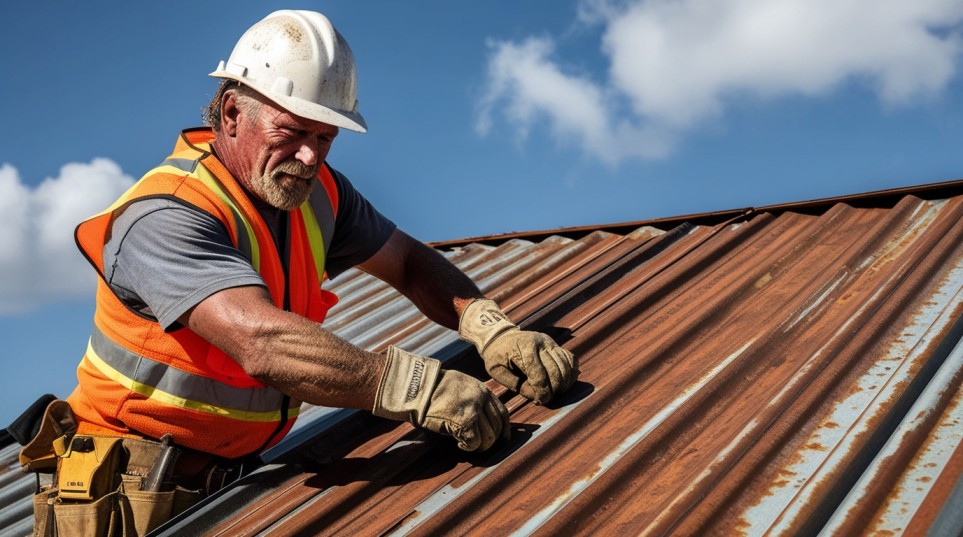Repair vs. Replace: When Does a New Roof Save You Money?
Deciding between roof repair and full replacement is often stressful and costly for homeowners. While minor repairs seem cheaper upfront, repeated fixes can drain your wallet faster than a new roof. So, when does investing in a new roof save you long-term money? Let’s break down the financial wisdom behind this critical decision.

When Roof Repair Makes Financial Sense
Repair is the smarter choice in these scenarios:
- Minor or Localized Damage:
If damage is confined to a small area (e.g., a few missing shingles, isolated leaks, or minor flashing issues), repairs are often 60–80% cheaper than replacement. - Relatively New Roof:
If your roof is under 50% of its expected lifespan (e.g., 10 years for a 25-year asphalt shingle roof) and the rest is intact, repairs can extend its life cost-effectively. - Tight Budget Constraints:
A professional repair can buy you 3–5 years to save for a full replacement, avoiding emergency loans or insurance claims. - Cosmetic Issues Only:
Surface problems like fading, algae stains, or granule loss rarely require full replacement. Cleaning or spot repairs suffice.
Pro Tip: Regular maintenance and minor repairs can delay replacement by 5–10 years, maximizing your roof’s ROI.
When Roof Replacement Saves You Money Long-Term
Despite higher upfront costs, replacement is the wiser investment when:
- Extensive or Recurring Damage:
Multiple leaks, sagging, or widespread rot signal structural failure. Continuous repairs become a money pit—replacement stops the cycle. - Repair Costs Exceed 40% of Replacement Cost:
The 40% Rule: If repairs cost >40% of a new roof’s price, replacement delivers better value. Example:- Repair estimate: $6,000
- New roof: $15,000
→ Replacement is smarter (extends roof life 20+ years vs. repair’s 3–5 years).
- Your Roof Is Near/Over Its Lifespan:
Aging roofs (20+ years for asphalt, 25+ for wood) are ticking time bombs. Replacement avoids catastrophic failures and interior damage ($10k+ in repairs). - Risk of Major Interior Damage:
Chronic leaks destroy attics, walls, and electrical systems. A new roof prevents $5,000–$20,000 in secondary damage. - Energy Efficiency Upgrades:
Modern materials (cool roofs, reflective coatings) cut HVAC costs by 15–30%. Savings offset replacement costs in 7–12 years. - Boosted Home Value & Saleability:
A new roof increases resale value by $15k+ (per Remodeling Magazine) and attracts buyers faster. Homes with old roofs sell 30% slower. - Stronger Warranties & Insurance Perks:
New roofs come with 25–50-year warranties. Some insurers offer premium discounts for impact-resistant or energy-efficient roofs.
How to Decide: A Step-by-Step Guide
Get a Professional Inspection ($150–$400):
Hire a licensed roofing contractor to assess damage severity, remaining lifespan, and underlying issues.
Compare 3+ Detailed Estimates:
Request written quotes for both repair and replacement. Ensure they include:
Material quality (e.g., architectural vs. 3-tab shingles)
Labor costs
Tear-off/disposal fees
Warranty terms
Run a Cost-Benefit Analysis:
Calculate repair costs as % of replacement cost (use the 40% rule).
Factor in energy savings (ask contractors for insulation R-value upgrades).
Consider home value impact (check local ROI data).
The Bottom Line
Roof repairs work for minor, isolated issues—but replacement saves more money when damage is severe, recurring, or your roof is aged. The 40% cost rule, energy savings, avoided interior damage, and added home value make replacement a savvy investment. Always consult a pro, crunch the numbers, and choose the option that secures your home (and wallet) for decades.
Remember: A roof is your home’s first defense—investing wisely today prevents financial storms tomorrow.

Leave A Comment